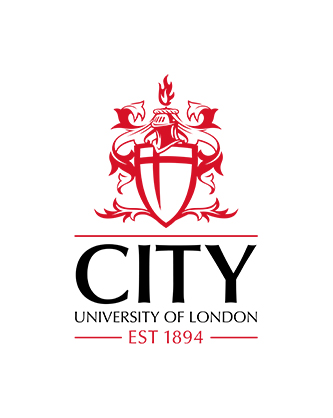Migration intentions and influencing factors among clinical radiography students in 14 African countries: A quantitative survey
Ohene-Botwe, B.  ORCID: 0000-0002-0477-640X, Antwi, W. K., Amedu, C.
ORCID: 0000-0002-0477-640X, Antwi, W. K., Amedu, C.  ORCID: 0000-0002-8168-885X , Akudjedu, T. N.
ORCID: 0000-0002-8168-885X , Akudjedu, T. N.  ORCID: 0000-0003-2423-6897, Mudadi, L-S.
ORCID: 0000-0003-2423-6897, Mudadi, L-S.  ORCID: 0000-0001-6337-7903, Chinene, B.
ORCID: 0000-0001-6337-7903, Chinene, B.  ORCID: 0000-0002-7189-7412, Quaye, S. N. A.
ORCID: 0000-0002-7189-7412, Quaye, S. N. A.  ORCID: 0009-0007-6722-4868, Dambele, M. Y., Mkoloma, S. S.
ORCID: 0009-0007-6722-4868, Dambele, M. Y., Mkoloma, S. S.  ORCID: 0000-0002-0233-4296, Barare, C.
ORCID: 0000-0002-0233-4296, Barare, C.  ORCID: 0000-0002-7471-946X, Kumsa, M. J., Sichone, J., Saizi, R.
ORCID: 0000-0002-7471-946X, Kumsa, M. J., Sichone, J., Saizi, R.  ORCID: 0009-0005-8485-8593, Mdletshe, S.
ORCID: 0009-0005-8485-8593, Mdletshe, S.  ORCID: 0000-0002-5418-5122, Dlama, J. Z., Joshua, J. & Malamateniou, C.
ORCID: 0000-0002-5418-5122, Dlama, J. Z., Joshua, J. & Malamateniou, C.  ORCID: 0000-0002-2352-8575 (2025).
Migration intentions and influencing factors among clinical radiography students in 14 African countries: A quantitative survey.
Radiography, 31(4),
article number 102988.
doi: 10.1016/j.radi.2025.102988
ORCID: 0000-0002-2352-8575 (2025).
Migration intentions and influencing factors among clinical radiography students in 14 African countries: A quantitative survey.
Radiography, 31(4),
article number 102988.
doi: 10.1016/j.radi.2025.102988
Abstract
Introduction
Understanding students' intentions regarding migration is crucial, as migration intentions are strongly correlated with future actions. This study aimed to evaluate the migration intentions of radiography students in Africa and assess the push and pull factors influencing their decisions.
Methods
This quantitative study employed an online cross-sectional survey. Descriptive and inferential statistics were conducted using Stata 13. For the students who confirmed their desire to migrate, an additional exploratory factor analysis (EFA) was performed using principal component analysis (PCA).
Results
A total of 614 students drawn from 14 African countries participated in the study, with a significant majority (93 %) expressing a desire to work in another country. The desire to fulfil self-aspirations was the most common push factor identified by students (Agree – 35.2 %, Strongly agree – 43.96 %; Overall - 79.16 %). In the exploratory factor analysis, five factors were identified, explaining 58.84 % of the variation in the data. These factors included social, Health System, economic, Political, and Professional factors. The opportunity to gain better clinical experience was the major pull factor identified, with 56.39 % of students strongly agreeing with this statement.
Conclusion
The potential emigration of future skilled healthcare professionals poses major ramifications for Africa’s healthcare workforce. Understanding these migration intentions could allow policymakers to develop strategies that improve local opportunities, strengthen healthcare facilities, and foster an environment that retains talent and stimulates career development in the region.
Implication for practice
Addressing the migration intentions of radiography students in Africa requires a proactive, multifaceted approach. By implementing the strategies outlined in this article, African healthcare systems can more effectively retain future radiography professionals and enhance the sustainability of the workforce.
| Publication Type: | Article |
|---|---|
| Additional Information: | © 2025 The Author(s). Published by Elsevier Ltd on behalf of The College of Radiographers. This is an open access article under the CC BY-NC-ND license (http://creativecommons.org/licenses/by-nc-nd/4.0/). |
| Publisher Keywords: | Migration intentions, Radiography students, Push factors, Pull factors |
| Subjects: | D History General and Old World > DT Africa H Social Sciences > HC Economic History and Conditions H Social Sciences > HM Sociology H Social Sciences > HN Social history and conditions. Social problems. Social reform J Political Science > JV Colonies and colonization. Emigration and immigration. International migration R Medicine > RC Internal medicine R Medicine > RT Nursing |
| Departments: | School of Health & Medical Sciences School of Health & Medical Sciences > Department of Allied Health |
| SWORD Depositor: |
Available under License Creative Commons Attribution Non-commercial No Derivatives.
Download (627kB) | Preview
Export
Downloads
Downloads per month over past year


 Metadata
Metadata Metadata
Metadata